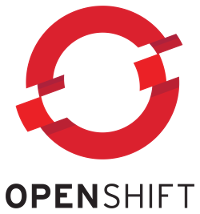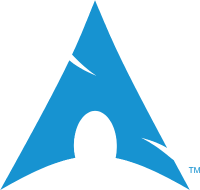
Lambda is AWS’ realization of a serverless architecture. Instead of deploying instances and scaling them manually, developers deploy only their code and AWS executes the code. Different triggers for code executions can be defined, e.g. when a new event in an AWS Kinesis stream is published or when a REST endpoint is accessed.
Since AWS takes care of Lambda execution, the Lambda does automatically scale in and out to current needs. Coupled with its “pay only for what you use” pricing and the fact that lambda execution can scale to zero when no lambda is executed, AWS Lambda is an interesting technology.
| Author: | Marco Bungart |
|---|---|
| Tags: | serverless, faas, aws, aws-lambda, java |
| Categories: | development |

The OpenShift command line interface is a very powerful tool which is quite useful for beginners and advanced user of OpenShift alike. Some of its features are not well documented or not documented at all. In this article I would like to shed some light on commands that I personally find useful and that are, from my observation, not widely in use. So without further ado, let’s start with the commands:
| Author: | Olaf Meyer |
|---|---|
| Tags: | openshift |
| Categories: | development |

Our world is full of various processes: tracking of goods delivery, currencies trading, monitoring of server resources, hotel bookings, selling goods or services etc. Since these processes occur over time, they can be described by time series data.
Successful businesses always take advantage of their data by analyzing it and then making predictions (e.g. predicting volume of sales for the next month) and business decisions (e.g. if the volume of sales grows then additional goods need to delivered to a warehouse).
There are a number of technologies for analysing the time series data. This article gives an introduction to one of them which is called TimescaleDB which is an open source solution for time series data analysis based on battle-tested PostgreSQL DBMS.
| Author: | Alexander Ryndin |
|---|---|
| Tags: | time series, timescale, postgres, postgresql, openshift |
| Categories: | development |

OMD Labs Edition 2.80 has been released today. The OMD Labs Edition is based on the standard OMD but adds some more useful addons like Grafana and Prometheus or additional cores like Icinga 2 and Naemon. This release updates many of the shiped components and adds some more usefull features.

The Prometheus monitoring tool follows a white-box monitoring approach: Applications actively provide metrics about their internal state, and the Prometheus server pulls these metrics from the applications using HTTP.
If you can modify the application’s source code, it is straightforward to instrument an application with Prometheus metrics: Add the Prometheus client library as a dependency, call that library to maintain the metrics, and use the library to expose the metrics via HTTP.
However, DevOps teams do not always have the option to modify the source code of the applications they are running.
At this year’s JavaZone conference, Fabian Stäber did a talk on how to instrument Java Web Applications with Prometheus metrics without modifying the application’s source code.
| Author: | Fabian Stäber |
|---|---|
| Tags: | PrometheusIO, conference, javazone, talk |
| Categories: | monitoring |

As the number of microservice based architectures continues to grow, development teams are facing new challenges when choosing the adequate tools for the job. At the technical level, the decisions need to be made considering the features of both: the cloud or container platform that is going to be used for the deployment and the runtime that will be used by the software. The infrastructure needs to be aware of the health and metrics of the software and the software itself must make the most of the infrastructure by tolerating failures and being able to handle configuration changes. There are numerous solutions for the individual challenges but the lack of an enterprise level blueprint actually paved the way for Eclipse Microprofile.
| Author: | Radu Ciopraga |
|---|---|
| Tags: | technology, microservices, microprofile |
| Categories: | microservices |

Let’s move on with this little series about how OpenShift environments may fall short in terms of developer experience.
Today we focus on the role that system tests have in an OpenShift infrastructure and what might possibly go wrong here testdata-wise.
| Author: | Oliver Weise |
|---|---|
| Tags: | openshift |
| Categories: | development |
 It’s about time for a new Sakuli release! Our latest release v1.2.0 is the first version to include a beta of Sakuli-UI, a web UI to help you develop and manage your tests.
It’s about time for a new Sakuli release! Our latest release v1.2.0 is the first version to include a beta of Sakuli-UI, a web UI to help you develop and manage your tests.
The new release also brings a bunch of enhancements and bug-fixes, a detailed changelog is included in this post.
Once again, we want to say THANK YOU for the great support of our contributors, our valued supporting companies and of course ConSol!
| Author: | Simon Hofmann |
|---|---|
| Tags: | sakuli, docker, e2e, end2end, end-to-end, ui-testing, testautomation, monitoring, nagios, omd |
| Categories: | sakuli, omd, monitoring, development |

In some OpenShift environments for building and delivering software we notice that the needs of developers, arguably a group of people who will have a great deal of contact with the platform, are not met as thoroughly as would have been possible.
Especially when it comes to software testing there is often much room for improvement. The usage of container platforms can improve testing techniques a lot but might also be a major blocker when it comes to the provided infrastructure. Good testing is already hard. Everything that makes it even harder, by forcing your developers into workarounds or compromises on testing quality will result in larger round trips, more testing effort, less valid testing, in short: wasted time.
So in this mini series of blog posts we will have a look into some possible fields of improvement and give recommendations on how to fix the respective situation.
Today we evaluate the fact, that some CI/CD setups for OpenShift may spoil the most simple type of testing a developer uses: Just running the software locally - in OpenShift.
| Author: | Oliver Weise |
|---|---|
| Tags: | openshift |
| Categories: | development |

This report is about the experience, I’ve made with Arch Linux as the operating system for a developers workstation. You’ll be introduced into the concepts of Arch Linux, followed by a introduction into the main tasks such as package installation and OS maintenance. At the end, I’ll discuss why I think that Arch Linux is a great OS for developers, and finish with a conclusion.
| Author: | Sven Hettwer |
|---|---|
| Tags: | linux, rolling-release, operating-systems, experience-report, bleeding-edge |
| Categories: | development, linux, operating-systems |